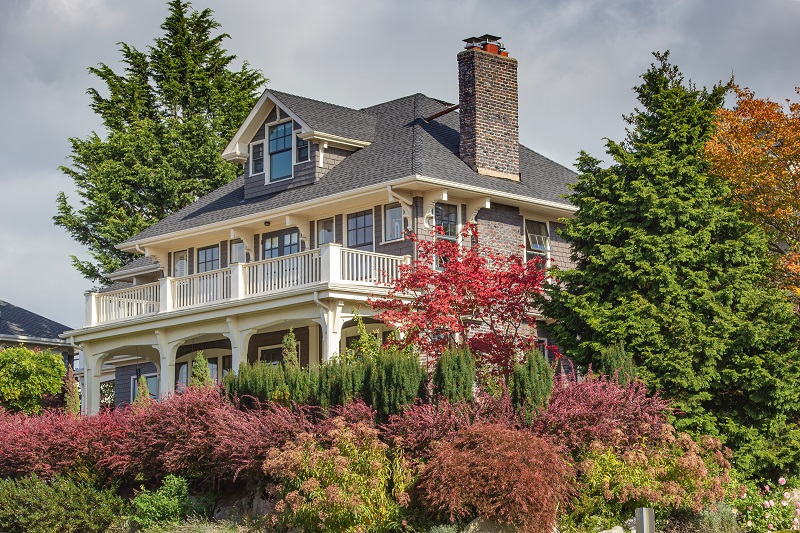The Steps to Restoring a Chimney
One of the most important parts of your home is the chimney. The chimney is responsible for drawing smoke and dangerous gases out of your home, and it also helps to regulate airflow. As a result, it’s essential to make sure that your chimney is in good condition. However, if you have a fixer-upper or haven’t had time to maintain your chimney in recent years, then you might be wondering what your restoration options are.
The Initial Inspection
Your chimney should be inspected at least once a year, but more often if you use it frequently. Especially in the spring after an entire winter season of putting your fireplace to use. If you notice any cracks or damage to the structure, it’s important to have it repaired as soon as possible. A chimney inspection is an important part of owning a home with a fireplace. The purpose of the inspection is to identify any potential problems that could cause a fire or other safety hazards. When it comes time to restore your chimney, one of the first things you should do is contact a reputable company that can inspect every inch of the chimney.
During that initial inspection, they will be able to check areas such as the bricks, clay titles, crown, cap, flashing, lining, and damper. Once the inspection is complete, you should then be given a comprehensive list of what repairs and upgrades are needed. This will not only help to ensure that your chimney is safe to use, but it will also help to prolong its lifespan. As a result, an initial inspection is an essential step in the chimney restoration process.
Masonry Repair
When the restoration company begins work on your chimney, they’re likely going to start with the masonry. This is because the brick, mortar, and tiles form the very foundation of the structure. If there is significant damage to any of these components, it could cause the rest of the chimney to crumble. As a result, repairs must begin with the necessary masonry repairs before any other upgrades or repairs are made. In some cases, the damage may be so extensive that the flue will need to be replaced entirely. However, this should only be done with the advice or oversight of a professional. Otherwise, you run the risk of further damaging your chimney.
Some of the most common masonry repairs include a procedure known as tuckpointing. This is the process of repairing mortar joints. Over time, the mortar between the bricks can crumble and fall out. This leaves gaps that allow water to seep in whenever it rains, there’s dew, or any moisture comes into contact with the brickwork. However, this can cause even more damage. Tuckpointing involves removing the old mortar and replacing it with new mortar. This will help to seal up any gaps and prevent further water damage in the future.
Another common type of masonry repair is known as repointing. This is similar to tuckpointing except that it involves repairing the joints between bricks rather than mortar joints. Just like with tuckpointing, repointing helps to seal up any gaps that may have formed over time. This will prevent water damage and help to extend the lifespan of your chimney.
Waterproofing
Many homeowners don’t realize that most chimneys are made from highly porous materials, and that means quite a bit of water can seep in during heavy storms or when the humidity levels rise in the summer. Waterproofing is an important process that prevents water from getting inside the chimney and causing damage. This simple project can extend the life of your chimney and prevent issues such as mold outbreaks. There are a few different ways to waterproof your chimney, so be sure to consult with a professional to find the best option for your home. But don’t wait until there’s a problem – a little preventive maintenance now can save you a lot of time and money down the road.
Lining or Relining the Chimney
A chimney liner is usually a small metal duct that slides directly down the flue, and it prevents heat and airborne contaminants from damaging the masonry. An experienced team of chimney sweeps can usually line or reline a chimney within a matter of hours, and that upgrade could greatly extend the life of the bricks and tiles. After the lining is in place, you should plan on having it replaced at least once every 15 or 20 years.
The Fireplace Itself
In addition to these few steps, you might also need to upgrade the fireplace itself. During your initial inspection with the chimney restoration company, you should speak with one of their team members about what repairs and upgrades need to be carried out on the firebox, hearth, and surrounding materials. This way you can make the entire fireplace and chimney one project to be taken care of at once.
The good news is that restoring a chimney is easier than most homeowners realize. In many cases, all you need to do is have the flue cleaned and inspected by a professional. This will remove any blockages and ensure that the chimney is safe to use. In addition, you might also need to have the mortar joints repaired or replaced. However, this is typically a fairly straightforward process that can be completed by a qualified contractor.
Investing in chimney restoration can have a big impact on the value of your property and your family’s comfort. A well-maintained chimney will be more efficient at drawing smoke and dangerous gases out of your home, and it will also help to regulate airflow. As a result, it’s well worth taking the time to invest in chimney restoration.















